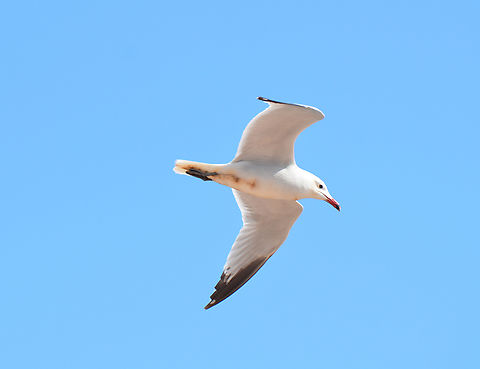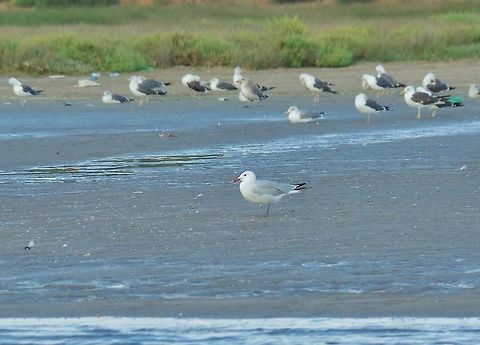
Appearance
The adult basically resembles a small European herring gull, the most noticeable differences being the short stubby red bill and "string of pearls" white wing primary tips, rather than the large "mirrors" of some other species. The legs are grey-green. It takes four years to reach adult plumage.
Naming
The genus name is from Ancient Greek "ikhthus", "fish", and "aetos", "eagle", and the specific "audouinii" and the English name are after the French naturalist Jean Victoire Audouin.Status
In the late 1960s, this was one of the world's rarest gulls, with a population of only 1,000 pairs. It has established new colonies, but remains rare with a population of about 10,000 pairs.Reproduction
It breeds on small islands colonially or alone, laying 2–3 eggs on a ground nest. As is the case with many gulls, it has traditionally been placed in the genus "Larus".Food
This species, unlike many large gulls, rarely scavenges, but is a specialist fish eater, and is therefore strictly coastal and pelagic. This bird will feed at night, often well out to sea, but also slowly patrols close into beaches, occasionally dangling its legs to increase drag.References:
Some text fragments are auto parsed from Wikipedia.